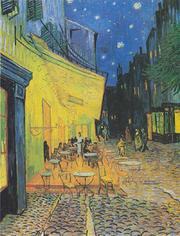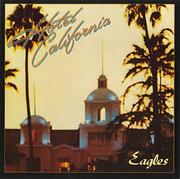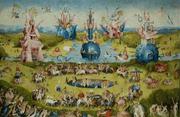American Gothic Meaning: Grant Wood Painting Interpretation & Analysis
BY K Shabi Updated 18 Oct 2021 PUBLISHED 24 Dec 2014
Painted in 1930, Grant Wood’s American Gothic is one of the most famous pieces of American art and is still widely parodied in popular culture today. What is the hidden meaning of the painting American Gothic by Grant Wood? There is more to American Gothic than first meets the eye. Read a critique, interpretation and analysis explaining the meaning and story behind this famous 20th century American painting.

Grant Wood's American Gothic: Where was it Painted?
Grant Wood’s American Gothic is a deceptively simple painting. At first glance, American Gothic seems to be just a portrait of a local couple standing in front of their little white house, almost as if posing for a photograph. But, upon closer inspection, American Gothic isn’t exactly a Norman Rockwell painting.
In many ways, American Gothic was a very personal painting for Grant Wood. An artist born in rural Iowa, Wood played a key role in the Regionalism art movement and is best known for his paintings depicting the rural American Midwest. Planning to enter an art exhibition in Chicago and in search of local subject matter, it was a little house not far from his home in Eldon, Iowa that inspired Grant Wood to paint American Gothic in 1930.
Though mostly obscured by the curious couple standing in front of it, the house in the background of American Gothic plays an important role in understanding the true meaning of the painting. After all, it was this house that initially inspired Wood to paint this scene in the first place. According to Wood, he was first attracted to the house because of its quaint architectural style: American Gothic, from which the title of the painting derives. Also referred to as Carpenter Gothic or Rural Gothic, this affordable, light-frame style of home became popular in America in the late nineteenth century. With distinctive Gothic elements like pointed arches and steep gables, Carpenter Gothic houses were meant to evoke the grand flourishes of classic European architecture, but at a price the working class American family could still afford.
An Interpretation of American Gothic: Satire & Architecture
What was it about this Carpenter Gothic home that inspired Grant Wood? Also known as The Dibble House, the little white house in American Gothic boasts a large Gothic-style window in its upstairs. While the rest of the house is mostly obscured, the Gothic window is a focal point of the painting, drawing the eye up and over the couple. Darrell Garwood, Wood’s biographer, claims that it was this window in particular that initially caught the artist’s eye and inspired him to paint American Gothic. According to Garwood, Wood found the Gothic window to be “a form of borrowed pretentiousness,” especially in a “flimsy frame house” such as this. For Wood, this American Gothic house was the perfect subject for satire.
In American Gothic, artist Grant Wood uses the house to paint a satire of small town American life. In Wood’s opinion, Carpenter Gothic homes were a “structural absurdity.” It seemed almost offensive to him to see the grandiosity of real Gothic architecture somewhat vulgarly reduced into the cutesy “cardboardy frame houses” increasingly popular in Eldon and other parts of the Midwest. Though this style of construction was obviously a primarily economical and practical choice for the typical Midwestern American family, Wood takes issue with its lack of authenticity. To him, this style of home is trying to be more dignified, historical and cultured than it really is.
Regionalism, Nationalism and Isolationism in American Gothic
There is no doubt that Grant Wood did not like to see European influencing the architecture of small town America. This rebellion against European influences can also be seen in the American Regionalism movement as a whole. While Europe had dominated the arts for centuries and spawned countless art movements and schools of thought, Regionalism was a very American art movement that began in the 1930s. The negative effects of the Great Depression and World War I contributed to pushing public opinion and policy in America increasingly toward nationalism and isolationism. Responding to this, American scene painters like Wood were growing more interested in using their art to depict realistic, down-to-earth scenes and images from their own lives and culture in rural and small-town America.
Analysis: Who Are the People in American Gothic?
A good example of Regionalist art, American Gothic is a realistic portrait of small town Anerican life in the 1930s. Who is the couple in American Gothic? When asked about the couple posing in front of the home, Grant Wood famously declared them "the kind of people I fancied should live in that house.” Like Wood, the man and woman in the painting also hail from rural Iowa, but their relationship is not what it first seems. Is there more than meets the eye in American Gothic?
Many people assume that the couple in American Gothic are husband and wife. In 1941, Wood revealed that he envisioned that the couple in his painting were actually a father and his “grown-up” spinster daughter. In reality, the man and woman in American Gothic have no real relationship to each other at all, but just served as models for the artist. The woman in the painting is Grant Wood’s sister, Nan Wood Graham. The man in the painting is Dr. Byron McKeeby, their family dentist. The palpable lack of warmth or intimacy in American Gothic is real. Graham and McKeeby never physically posed or sat together, but were painted on separate occasions by Wood, only partly explaining the awkward rigidness evident in the painting.

The Meaning of American Gothic & The Farmer’s Daughter
In American Gothic, neither the tight-lipped man nor his grown-up daughter seem to be very warm or open. Aging and balding, the man is serious and stern but, unlike his daughter, is more dominant and direct, looking the viewer right in the eye. With a pitchfork in hand, he is identifiably a farmer, perhaps anxious to escape the limelight and retreat back to working the land. Holding the tool in front of him in a vaguely aggressive manner, he seems ready to weaponize it if necessary. What is he trying to protect? He might be displaying concern for his property, but it could also be that he is trying to shield his unmarried daughter from outside advances and influences. In this way, Grant Wood seems to play on the old “farmer’s daughter” joke/trope in this satire painting.
Prim and proper, the daughter in American Gothic seems aloof and distant as she furrows her brow and stares off vacantly, eyes averted and lips pursed, maybe in a learned act of modesty. High-necked and dark-colored, her dress is also demure. She’ll let her father handle the situation. In an effort to capture the essence of this character, Wood picked out an old-fashioned brooch and colonial print apron for his sister to wear when posing as the daughter in the painting. The print of her dress is also echoed in the curtains of the covered Gothic window of the house. Behind her, all of the windows are obscured, blocking the eyes of the viewer from looking into the domestic interior, a traditionally feminine space.
Critical Response to American Gothic Painting by Grant Wood
What did people think about this odd pair? Like the home behind them, Wood’s words suggest that he found these people to be a tad absurd, tragic even, despite how seriously they seem to take themselves. While many critics interpreted American Gothic as a somewhat snobby judgment on those who could be viewed as good, hard-working Americans — the salt of the earth — Wood was familiar with this culture and from a similar background himself. Defending his painting, Wood stated, “These are types of people I have known all my life. I tried to characterize them truthfully.”
American Gothic Meaning Explained: A Critique of Small Town America
What is the hidden meaning of American Gothic? Why is this painting so famous? In his painting, Grant Wood critiques and satirizes the restrictive and at times repressive nature of small town American life in the 1930s more than the people themselves. In terms of composition, the tightly cropped painting suggests the claustrophobic and limiting nature of life in a small town, especially for women. The sad, slightly troubled expression on the daughter’s humorless face reveals her true feelings about her place within this social structure. The ceilings in the American Gothic house might be vaulted, but we can see in Wood's painting that the lifestyle and culture that come with it may be stifling.







